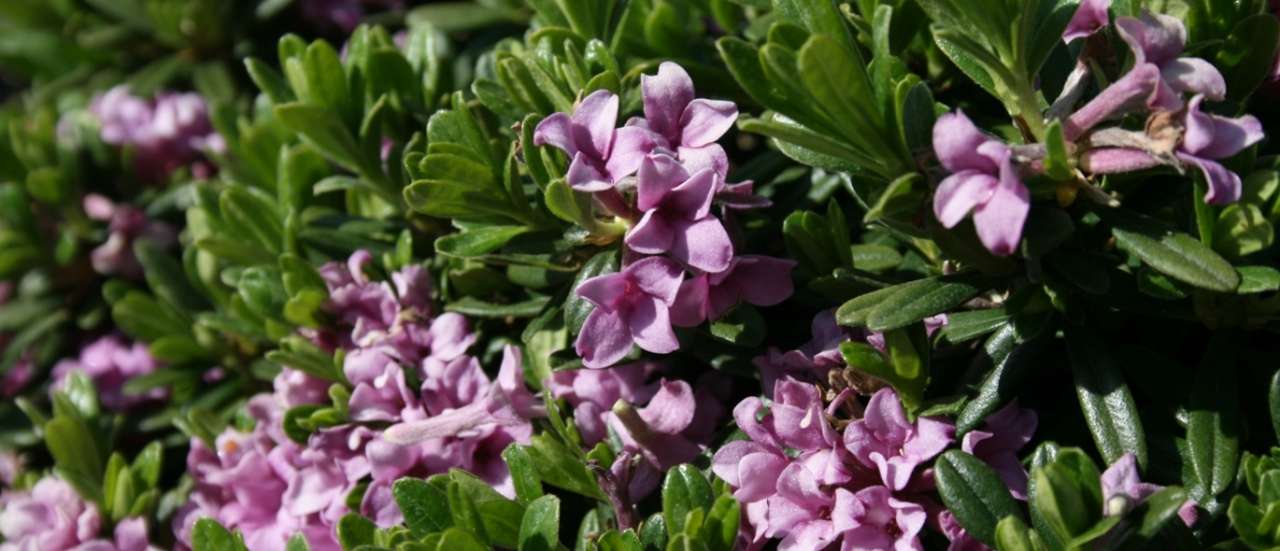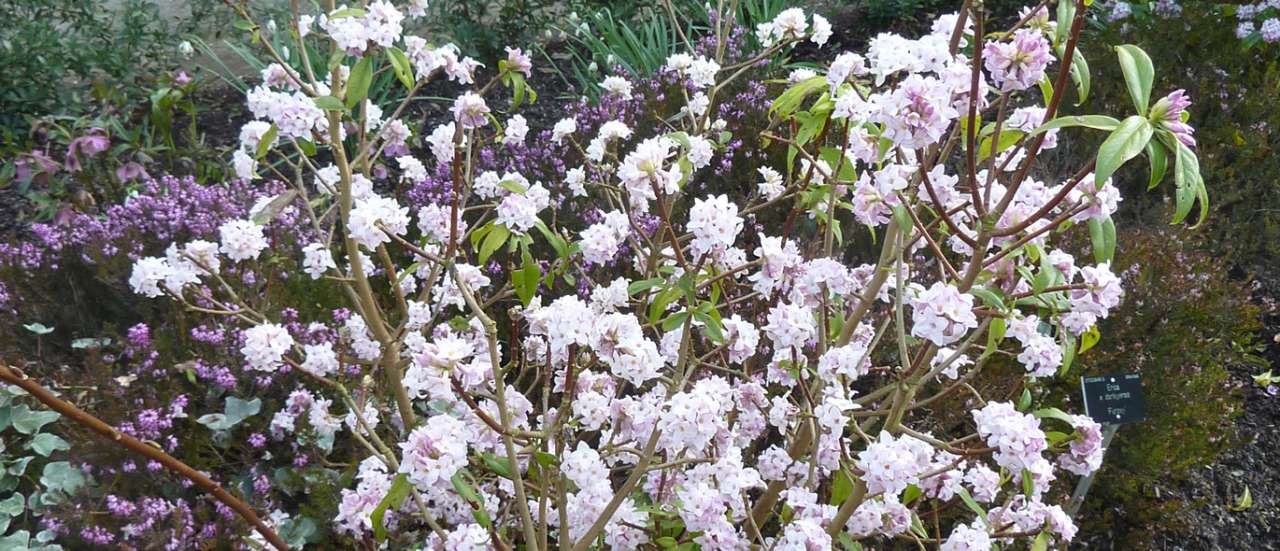If you're looking for a shrub to add a beautiful fragrance to your garden, patio or balcony then a Daphne is the perfect choice. Most Daphnes are evergreen and tend to produce clusters of fragrant pink or white flowers from mid-winter to early spring when there is little else flowering in the garden. To get the most from this sweetly scented shrub, it is best planted near an entrance or walkway where you can regularly take in this lovely fragrance in passing. The flowers are also excellent for cutting and it is said that their fragrance intensifies when brought indoors.
Now, it has also been said that these shrubs can be quite temperamental when it comes to flowering, however, if you follow this guide and make sure your Daphne is grown in the right conditions, we're sure you'll be able to enjoy the blooms for many years to come.
 Daphne - Photo by Sten Porse (CC-BY-SA-2.0)
Daphne - Photo by Sten Porse (CC-BY-SA-2.0)
Where and How to grow:
As Daphnes are naturally woodland shrubs, they will grow best in dappled shade but the true key to success with Daphnes is to make sure they are grown in light, free draining soil. For many of us, particularly in the north-west of Ireland, this may be something of an ask in terms of our general garden space but if you do have heavy or water retentive soil this drawback can easily be overcome.
- If you're lucky enough to have the free draining soil required then you can plant these like any other shrub, simply dig a hole as deep as the pot they are in and twice as wide. Mix some compost or leaf-mould with the surrounding soil and add a bit of grit if necessary to improve drainage further before backfilling, firming in and giving them a good water.
- If like many of us here in the west/north-west of Ireland, your soil is heavy, then the best thing you can do is create an elevated soil bed mixed with organic materials such as coarse bark to give your shrubs a rich free-draining environment to thrive in (I currently have a compact, small variety of Daphne growing in an old chimney pot, where it has been happy for the past 2 years). You could even take a large terracotta pot with the bottom knocked out/broken off, bury the base in your garden so the rest of the pot is elevated, fill this with a free draining, humus rich mix, and plant your Daphne in that.
- If you are planting one of the smaller varieties of Daphne in a pot, you just need to make sure you have good drainage and a pot that is deep enough to accommodate the roots. Again, we would recommend terracotta over something like a plastic pot as plastic pots can tend to hold moisture for longer and we don't want to encourage root-rot. If you do use a plastic container of some kind ensure there are plenty of drainage holes in the bottom and in either case make sure the pot is elevated off the floor with something like pot-feet. One mistake people tend to make with containers is that, whilst they may have plenty of holes in the base of the container, if the pot is then just sitting on the floor, there is no free space for the water to drain from easily.
Daphne care:
Once you have your Daphne planted in the right conditions there is very little to do in terms of maintenance, in fact, with Daphnes, less is definitely more. One thing to bear in mind when planting your shrub is that they do not react well to disturbance, so be sure that where you plant them is going to be their final position as you may be disappointed if you dig it up to move it later and find that it doesn't survive the move.
In terms of pruning, keep this light and only as needed. If you need to remove long branches, do so at a node without cutting into the main stem of the plant
Finally when it comes to watering and feeding, keep this light as well. You should only need to water a Daphne infrequently during long dry spells. You can apply a generous mulch in spring and autumn to feed and protect the roots and if you're growing your Daphne in a container, use a well balanced feed designed for use with shrubs when the blooms are finished.
It is also worth noting that Daphne is highly-toxic when eaten and can irritate the skin and eyes, so keep this in mind when handling these pants.
 Daphne 'Jacqueline Postill' - photo by Magnus Manske (CC BY-SA 3.0)
Daphne 'Jacqueline Postill' - photo by Magnus Manske (CC BY-SA 3.0)
Propagation:
It is best to propagate Daphnes by taking semi-ripe cuttings in mid to late summer or early autumn:
- You will need to take your cuttings from healthy, non-flowering stems, cutting just above a leaf node and if you are doing several, it's good to have a zip-lock bag handy to put them in so they don't lose too much moisture before you plant them up
- You then need to just prepare some small pots or a modular tray, with very free draining compost (you can just add a good amount of grit or perlite to some seed or multi-purpose compost)and water the pots or trays allowing the water to drain before moving to the next stage.
- Pinch out the growing tip of any terminal cuttings and then strip your cuttings so that they only have 2 or three leaves left at the top.
- You can then make small holes in your compost using your finger or a dipper, position your cuttings so they are in the compost with the leaves exposed at the top and then gently firm them in place (usually a good tap of the pot or tray on your work surface will suffice to bring the compost around your cutting).
- Finally you can cover these with a propagation lid or just a bit of fleece (which also prevents scorching). Then you just need to make sure the compost remains fairly moist until you see roots developing from the bottom of the pot or tray - at which time you can pot these on.
Daphne 'Pink Fragrance' in Chimney Pot - photo by Richard (Web Ed.)








